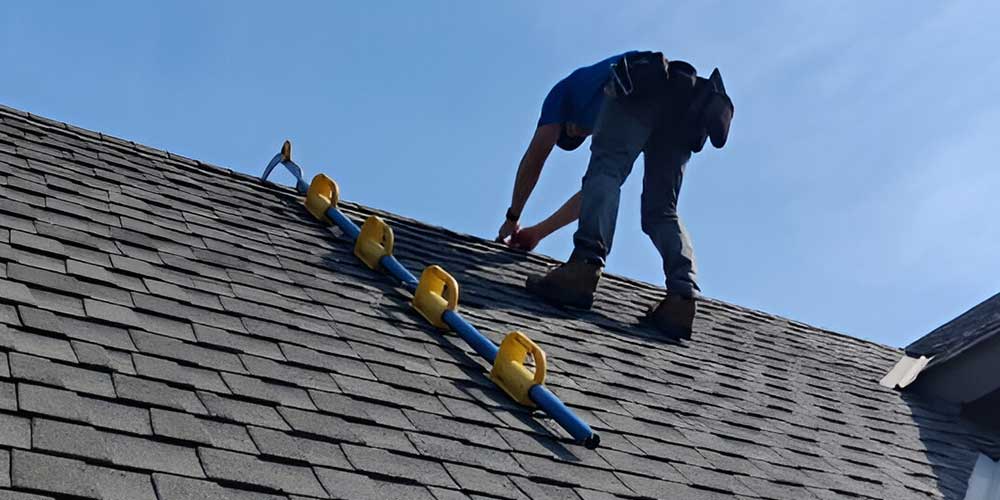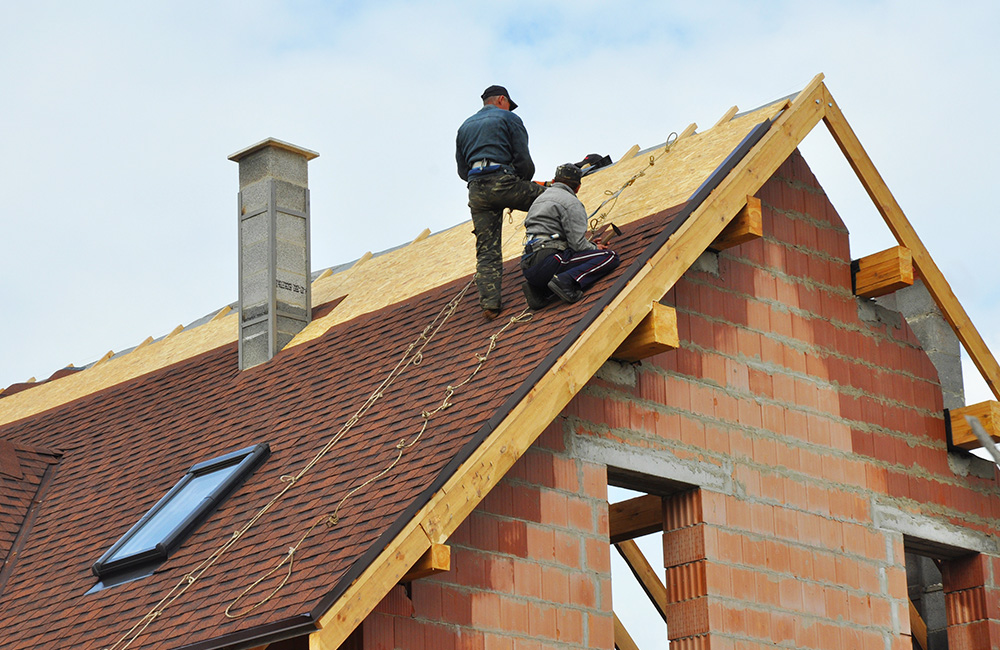Roofing Oahu: Quality Providers for Long Lasting Roofs in Oahu
Roofing Oahu: Quality Providers for Long Lasting Roofs in Oahu
Blog Article
Recognizing the Various Kinds of Roofings: A Comprehensive Overview for Homeowners
With a variety of alternatives-- ranging from the typical gable to the contemporary flat-- each kind provides one-of-a-kind advantages and difficulties that ought to straighten with the property owner's environmental considerations and certain needs. As we explore the ins and outs of different roofing system types, it ends up being evident that one size does not fit all; the right selection may surprise you.
Gable Roofings
Saddleback roofs, defined by their triangular form, are amongst the most prominent roofing designs as a result of their simplicity and effectiveness in shedding water and snow. This style includes 2 sloping sides that meet at a ridge, permitting effective drain and minimizing the danger of water buildup. The high pitch frequently connected with saddleback roofs improves their capability to manage heavy rainfall, making them suitable for various climates.
Along with their functional advantages, gable roof coverings supply visual versatility. They can be adjusted to numerous building designs, from typical to modern homes. The layout can likewise suit added attributes such as dormer windows, which boost natural light and air flow in the attic room room.
Furthermore, saddleback roofs provide adequate space for insulation, contributing to power efficiency. Homeowners can pick from a selection of roofing products, consisting of asphalt shingles, metal, and tiles, better improving customization options.
Despite their advantages, gable roofings might need extra support in areas prone to high winds or heavy snowfall. Overall, the saddleback roof continues to be a favored choice due to its mix of capability, toughness, and aesthetic allure.
Apartment Roofs
Flat roofing systems are commonly identified for their minimal style and functional applications, especially in industrial and commercial setups (oahu roofing). These roofings feature a horizontal or nearly horizontal surface, which permits easy construction and functional area usage. While they may lack the visual appeal of pitched roof coverings, level roofing systems offer various benefits, specifically in urban atmospheres where optimizing area is vital
One of the primary advantages of level roof coverings is their ease of access. House owners can use the roofing system room for numerous functions, such as roof gardens, balconies, or photovoltaic panel setups. Additionally, flat roofings are generally a lot more economical to install and keep contrasted to their sloped equivalents, as they require less products and labor.
Usual products made use of for level roofs include built-up roof covering (BUR), changed asphalt, and single-ply membrane layers, each offering distinctive advantages. Overall, flat roofing systems offer as a versatile and useful option for several home owners and businesses alike.
Hip Roofings
Hip roofing systems are identified by their sloped sides that converge on top, creating a ridge. This layout stands out from gable roofs, as all 4 sides of a hip roofing slope downwards toward the walls, providing an extra secure structure. The angle of the slopes can differ, allowing for convenience in building aesthetic appeals and capability.
One of the main advantages of hip roofs is their capacity to hold up against heavy winds and damaging weather. The sloped surfaces allow far better water drain, minimizing the danger of leakages and click here now water damages. In addition, hip roofs offer raised attic room, which can be used for storage space or also converted right into comfortable areas.
Nevertheless, building a hip roof can be extra costly and complex than less complex roofing system kinds, such as saddleback roofs. The additional product and labor included in creating the slopes and making certain appropriate architectural honesty can lead to greater costs. Despite these disadvantages, many home owners favor hip roofings for their durability, visual appeal, and capacity for power efficiency.
Mansard Roofings
Mansard roof coverings, often acknowledged by their unique four-sided design, function 2 inclines on each side, with the reduced incline being steeper than the upper. This architectural design, originating from France in the 17th century, is not only visually enticing but functional, as it makes the most of the useful space in the upper floors of a building. The high reduced slope enables even more clearance, making it a perfect option for loft spaces or attics, which can be converted right into living spaces.
Mansard roofing systems are defined by their convenience, suiting various building designs, from traditional to modern. They can be constructed with different products, consisting of asphalt shingles, slate, or see page metal, providing homeowners with a series of choices to match their spending plans and choices. Furthermore, the design enables for the combination of dormer windows, enhancing natural light and ventilation in the top levels.
Nevertheless, it is necessary to think about the prospective downsides. Mansard roofs might need more maintenance as a result of the complexity of their layout, and their high slopes can be testing for snow and hop over to these guys rainfall overflow. Generally, mansard roofings integrate sophistication with usefulness, making them a prominent choice amongst home owners looking for distinct building attributes.
Dropped Roofing Systems
As property owners significantly look for simplicity and functionality in their building designs, shed roof coverings have become a preferred selection. Characterized by a single sloping plane, a shed roofing provides a minimal visual that enhances different home styles, from modern to rustic.
Among the key advantages of a shed roof covering is its straightforward construction, which often translates to reduce labor and product costs. This design permits effective water drain, reducing the threat of leakages and water damage. Additionally, the vertical incline offers sufficient space for skylights, enhancing natural light within the inside.
Dropped roof coverings also supply adaptability in regards to use. They can be effectively incorporated right into additions, garages, or outdoor frameworks like sheds and pavilions. Moreover, this roofing system style can suit different roof materials, including metal, asphalt roof shingles, or even environment-friendly roofings, aligning with eco-friendly campaigns.
Nonetheless, it is necessary to think about regional climate problems, as heavy snow loads may require changes to the roof's angle or structure. Generally, dropped roofings provide a functional and cosmetically pleasing choice for property owners seeking to maximize performance without jeopardizing design.
Final Thought


Gable roofs, identified by their triangular form, are among the most preferred roof covering styles due to their simplicity and performance in shedding water and snow. oahu roofing. The high pitch frequently linked with gable roofings improves their ability to handle heavy rainfall, making them suitable for numerous environments
While they may do not have the aesthetic allure of pitched roofing systems, flat roof coverings offer numerous advantages, specifically in metropolitan atmospheres where optimizing room is vital.

Report this page